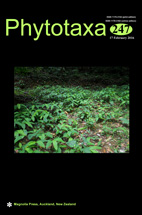Abstract
A new ascomycete species, inhabiting decaying bamboo culms, is introduced in this paper based on morphology and molecular evidence. Analyses of partial LSU sequence data place the taxon in a monophyletic clade within the order Pleosporales. Morphological characters of the taxon are also distinct from other members of Pleosporales. Ligninsphaeria jonesii gen. et sp. nov. is therefore introduced to accommodate the new taxon, which is characterized by its clypeate, scattered, deeply immersed ascomata, with a slit-like opening, long ostioles, cellular pseudoparaphyses, clavate asci containing broad-fusiform and 1-septate ascospores surrounded by a gelatinous cap at both ends. The phylogenetic analyses show that the new taxon is phylogenetically close but distinct from the families Amniculicolaceae and Testudinaceae, and forms a distinct clade from other taxa in Pleosporales. The new taxon is described and compared with similar taxa. A new genus Ligninsphaeria (Pleosporales, incertae sedis) is introduced to accommodate this distinct lineage.

